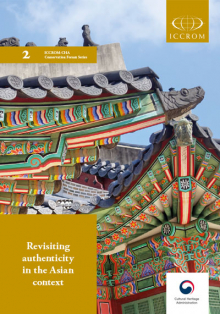
Authenticity is a nebulous term within the conservation profession. The concept has historically tended to privilege materials-based approaches to conservation practice over recognizing spiritual and non-material values of a place, however, the drafting of the Nara Document in 1994 marked a shift in paradigm. Considered an important moment in the history of conservation, the Document expanded the concept of authenticity and drew attention to cultural diversity within the heritage discourse.
Although the Nara Document was developed in Asia, regional heritage practitioners have since felt the need to revisit it due to specificities and the challenges they face in conserving heritage. This book addresses the meaning and application of the concept of authenticity in a variety of contexts within Asia, presenting case studies and reflections that examine the relationship between material and intangible values. As the book illustrates, there are some instances where the historical weight of the concept of authenticity poses challenges to actual practice in the region. Sometimes international approaches and obligations may make it difficult to address the specific local cultural circumstances, and alternatively, there are instances where local practices that can hinder the work of heritage practitioners in their ability to meet so-called international requirements.
For cultural heritage practitioners and managers, policy makers, as well as teachers and students in Asia or elsewhere in the world, this book offers viewpoints and case studies that span a range of circumstances in several countries. The contributors are all practitioners; their experiences range from managing a national heritage department to carrying out research on the ground in order to preserve heritage values through participatory processes.
